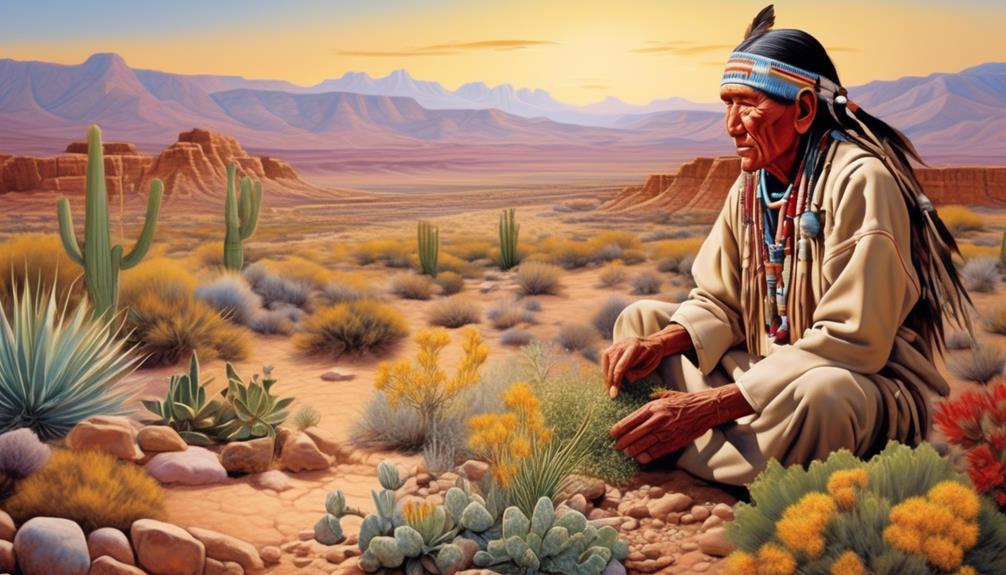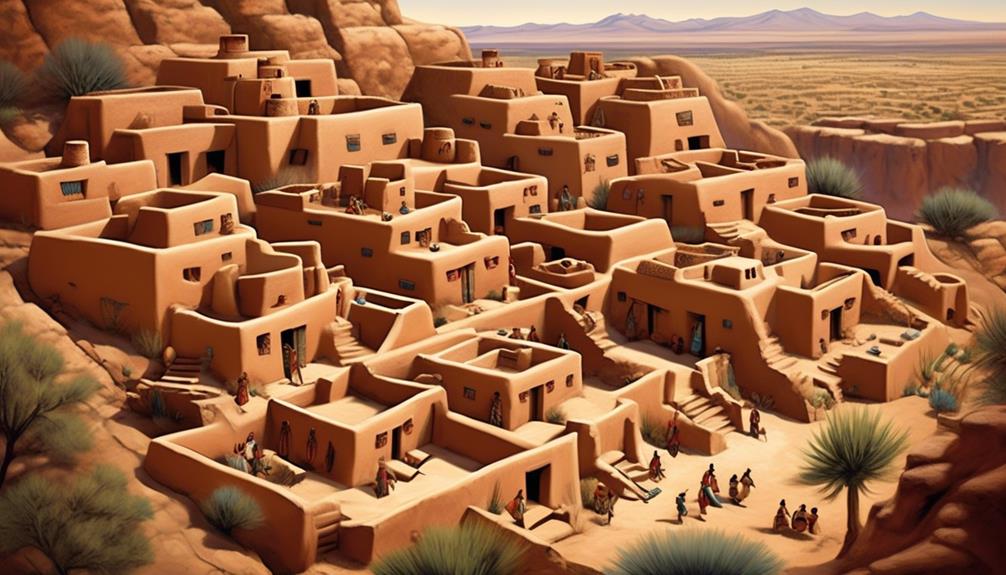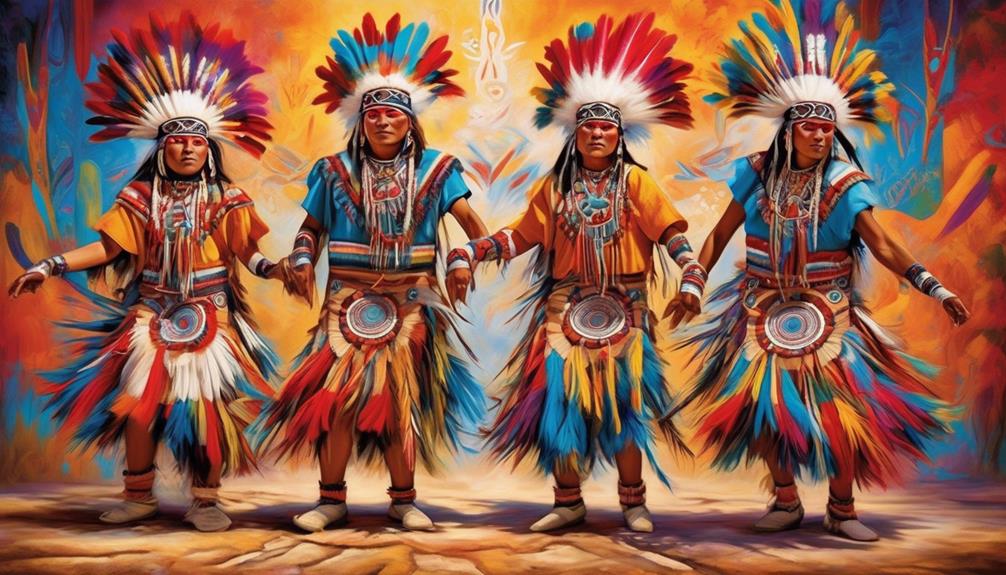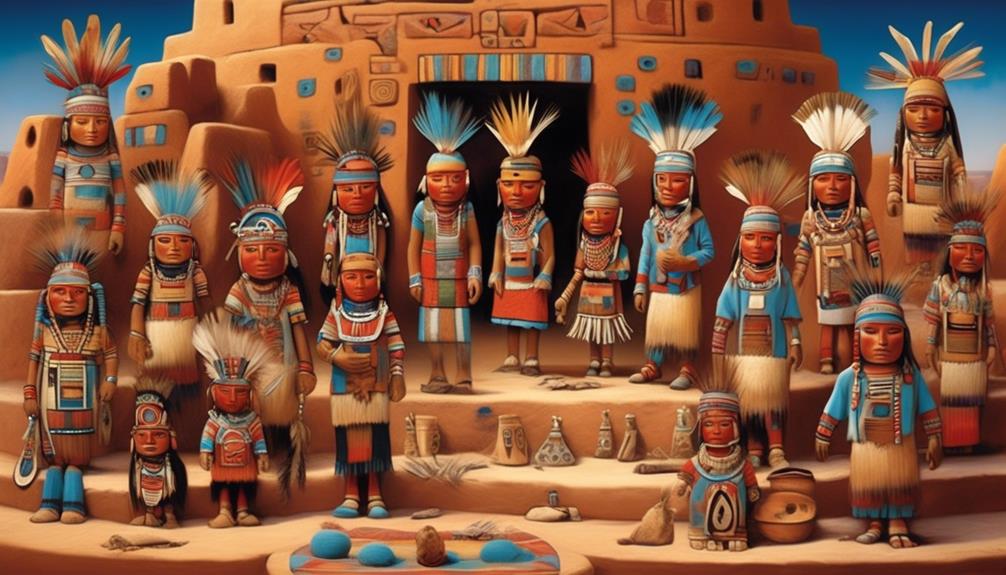Have you heard of the Hopi tribe, known for their rich cultural heritage and unique way of life? Did you know that the Hopi reservation in northeastern Arizona covers over 1.5 million acres?
This vast land encompasses a diverse range of climates, each with its own impact on the tribe's daily activities and traditions. But what exactly were these climates, and how did the Hopi people adapt to them?
Let's explore the fascinating world of Hopi climate and its influence on one of the oldest indigenous cultures in North America.
Key Takeaways
- The Hopi tribe lived in a region characterized by mesas, buttes, and arid desert valleys in northeastern Arizona.
- The climate in Hopi lands included scorching hot summers and bitterly cold winters, with scarce and unpredictable rainfall.
- The Hopi people developed innovative farming techniques, water conservation methods, and soil fertility methods to adapt to the harsh climate.
- The agricultural calendar of the Hopi tribe was intertwined with ceremonial rituals, and agriculture shaped daily routines and communal activities.
The Geography of Hopi Lands
Nestled in the arid landscapes of northeastern Arizona, the Hopi lands encompass a unique terrain that has shaped the traditions and livelihoods of the Hopi people for centuries. The geographical features of the Hopi lands are characterized by mesas, buttes, and arid desert valleys. These land formations haven't only provided a natural defense against external threats but have also influenced the spiritual and agricultural practices of the Hopi tribe.
The mesas, towering high above the desert floor, hold immense cultural significance for the Hopi people. They aren't only geological formations but are considered living entities, inhabited by ancestral spirits and deities. The Hopi have established their villages on these mesas, utilizing their natural fortification to protect against intruders. These land formations have also influenced the agricultural practices of the Hopi, as they've developed sophisticated methods to cultivate crops in the arid desert environment.
The Hopi lands' geographical features have played a pivotal role in shaping the cultural identity and resilience of the Hopi tribe, and they continue to be integral to the tribe's traditions and way of life.
The Characteristics of Hopi Climate

The unique terrain of the Hopi lands, with its towering mesas and arid desert valleys, greatly influences the climate experienced by the Hopi tribe, shaping their cultural practices and way of life. The characteristics of Hopi climate are shaped by temperature extremes and precipitation patterns, which play a vital role in the daily lives of the Hopi people.
- Temperature Extremes:
The Hopi lands experience dramatic temperature fluctuations, with scorching hot summers and bitterly cold winters. These extremes have a profound impact on agricultural practices, forcing the Hopi to develop innovative farming techniques to cope with the harsh conditions.
- Precipitation Patterns:
Rainfall in the Hopi region is scarce and unpredictable, leading the tribe to rely on intricate water conservation methods and ceremonial rituals to ensure the success of their crops. The monsoon season brings brief but intense downpours, crucial for sustaining the agricultural cycles and maintaining the delicate balance of the ecosystem.
- Cultural Adaptations:
The Hopi people have adapted to these climatic challenges by integrating environmental stewardship into their traditions, fostering a deep spiritual connection with the land. Their ceremonies and rituals are closely tied to the natural rhythms of the climate, reflecting a profound respect for the delicate balance of their environment.
Seasonal Weather Patterns
Amidst the shifting winds and ever-changing skies, we observe the intricate dance of seasonal weather patterns that shape the rhythms of life for the Hopi tribe. The Hopi people have developed a profound understanding of their environment, allowing them to adapt to the challenges posed by their climate. Through generations of indigenous knowledge, they have honed their ability to interpret and respond to the subtle shifts in weather patterns, enabling them to thrive in a region marked by environmental changes.
| Season | Weather Patterns | Climate Adaptation |
|---|---|---|
| Spring | Mild temperatures, | Planting of drought-resistant crops, |
| occasional showers | water conservation techniques. | |
| Summer | Intense heat, | Dry farming methods, ceremonial |
| monsoon rains | prayers for rain. | |
| Autumn | Gradual cooling, | Harvesting and preservation of crops, |
| clear skies | preparation for winter. | |
| Winter | Cold temperatures, | Gathering and storage of winter |
| occasional snowfall | provisions, ceremonial winter rituals. |
The Hopi tribe's deep connection to their environment has allowed them to develop sustainable practices that align with the natural rhythms of their climate. By integrating their understanding of weather patterns with their cultural traditions, the Hopi have established a harmonious relationship with the land, serving as a testament to the power of indigenous knowledge in navigating environmental challenges.
Impact on Agriculture and Daily Life
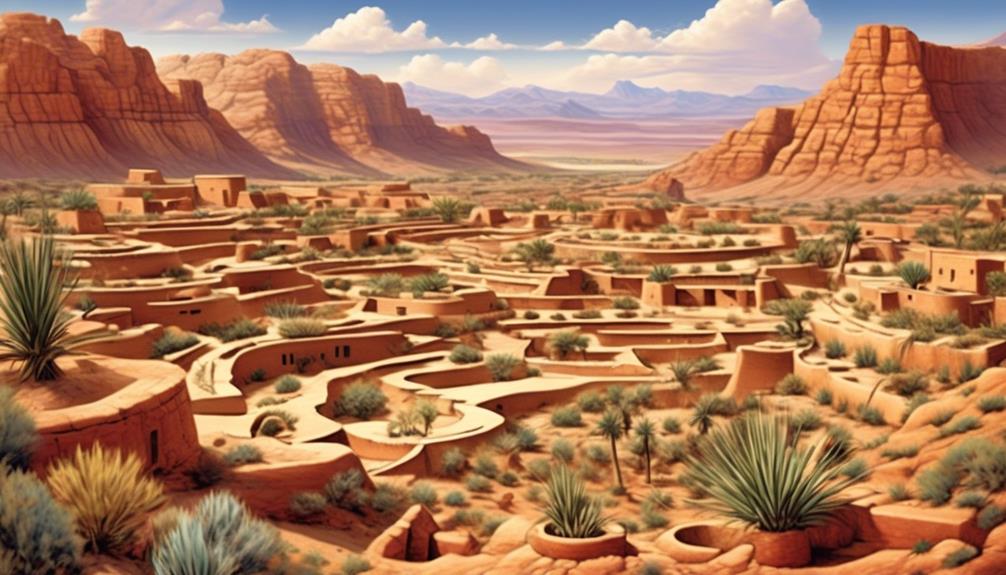
Navigating the cyclical dance of seasonal weather patterns, the Hopi tribe's deep understanding of their environment significantly impacts their agriculture and daily life. The agricultural practices of the Hopi tribe are deeply intertwined with their cultural traditions, shaping their daily routines and community life in profound ways. Here are a few key insights into the impact of climate on the agriculture and daily life of the Hopi tribe:
- Intertwining of Rituals and Agriculture: The agricultural calendar of the Hopi tribe is intricately woven with ceremonial rituals, reflecting their spiritual connection to the land and the natural world. This integration of cultural traditions and agricultural practices influences not only the timing of planting and harvesting but also the communal activities and spiritual life of the tribe.
- Adaptation to Arid Conditions: The arid climate of the Hopi region has shaped their agricultural techniques, leading to the development of innovative methods for water conservation and soil fertility. The tribe's ability to adapt to the challenges of their environment demonstrates their resilience and deep understanding of sustainable farming practices.
- Community Cohesion and Sharing: The agricultural practices of the Hopi tribe foster a strong sense of community cohesion and cooperation. Shared labor, communal land stewardship, and collective ceremonies underscore the interconnectedness of daily life, agriculture, and cultural traditions within the tribe.
Traditional Coping Strategies
Drawing on our ancestral knowledge and cultural wisdom, the Hopi tribe has developed traditional coping strategies that deeply resonate with their values and connection to the land. Cultural practices and community resilience are integral to the Hopi tribe's ability to adapt and thrive in the face of environmental challenges.
| Traditional Coping Strategies | Description |
|---|---|
| Agricultural Diversity | The Hopi tribe practices diverse agriculture, growing a variety of drought-resistant crops such as corn, beans, and squash. This diversity ensures food security, even in times of environmental stress. |
| Ceremonial Practices | Ceremonies and rituals play a vital role in the Hopi tribe's coping strategies. Through traditional ceremonies, the community fosters a deep spiritual connection to the land, instilling a sense of resilience and unity in the face of adversity. |
| Water Conservation Techniques | The Hopi tribe has developed sophisticated water conservation techniques, such as the construction of intricate irrigation systems and the harvesting of rainwater. These practices enable the community to sustainably manage water resources, crucial for agricultural productivity and overall resilience. |
These traditional coping strategies not only demonstrate the Hopi tribe's deep cultural connection to the land but also serve as a testament to their resilience and adaptability in the face of environmental challenges.
Frequently Asked Questions
What Are the Traditional Hopi Ceremonies and Rituals Related to Weather and Climate?
Traditional ceremonies and weather rituals are deeply intertwined with our cultural practices. We honor the natural world's relationship with climate through these ceremonies.
As climate change impacts our environment, we continue our efforts in environmental conservation. Our rituals and ceremonies reflect our deep respect for the natural world and our commitment to preserving it for future generations.
How Has Climate Change Affected the Hopi Tribe's Traditional Practices and Beliefs?
Climate change has significantly impacted the Hopi tribe's traditional practices and beliefs. We've had to adapt our ceremonies and rituals to the changing climate, preserving our indigenous knowledge and cultural traditions.
The impact of climate change on our way of life has prompted us to find new ways to maintain our connection to the land and honor our ancestors. It's a challenge, but we're committed to preserving our traditions in the face of these changes.
Are There Any Traditional Stories or Legends Within the Hopi Culture That Explain the Origins of Their Climate and Weather Patterns?
Traditional stories and legends play a significant role in the Hopi culture, offering insights into the origins of climate and weather patterns. These narratives are deeply intertwined with the natural world, reflecting the tribe's reverence for the environment.
These stories also inform the Hopi's traditional practices, beliefs, and environmental conservation efforts, providing valuable wisdom in the face of climate change. Through these tales, the Hopi community maintains a strong connection to their ancestral lands and the elements that sustain them.
How Do the Hopi People View Their Relationship With the Natural World and How Does It Relate to Their Climate and Environment?
In the Hopi worldview, ecological balance is paramount. Our people view the natural world as integral to our existence, shaping our sustainable living practices.
We honor environmental stewardship through traditions and ceremonies, fostering a deep connection to the land. Respect for the earth is fundamental, ingrained in our cultural ethos.
Our harmonious relationship with the natural world is a testament to our enduring commitment to preserving and nurturing our environment.
What Role Does the Hopi Tribe Play in Modern Climate Activism and Environmental Conservation Efforts?
In modern climate activism, we, the Hopi tribe, advocate for environmental stewardship rooted in our tribal traditions.
Indigenous activism is central to our efforts in addressing climate change, as we strive to preserve our sacred lands and natural resources.
Our cultural values guide us in promoting sustainable practices and fostering a deep respect for the earth.
Through our actions, we aim to inspire others to join in the collective effort to protect our planet for future generations.
Conclusion
In conclusion, the Hopi tribe lived in a climate that was characterized by hot, dry summers and cold, snowy winters. Despite the challenges of their climate, the Hopi people developed innovative agricultural techniques and traditional coping strategies to thrive in their environment.
While some may argue that the climate was too harsh for sustainable living, the Hopi's deep connection to the land and their resourcefulness allowed them to adapt and prosper in their unique climate.
Mary is a passionate writer who brings creativity and a fresh perspective to our team. Her words have the power to captivate and inspire, making her an essential contributor to our content. Mary’s commitment to storytelling and dedication to promoting Indigenous culture ensures that her work touches the hearts of our readers. We’re fortunate to have her as part of our team.



